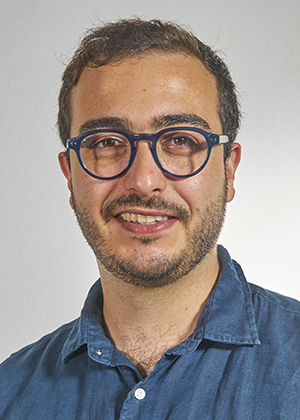Development of light-driven deformable and electroactive 3D scaffolds for electromechanical modulation of epidermal tissues
Neuroelectronic Interfaces, RWTH Aachen University

Project overview. The aim is to use light-driven deformable 3D pillars (a-b) and photo-electroactive 3D pillars (c-d) to regulate keratinocyte motility, differentiation, and proliferations. (a, a’) shows poly(disperse red 1)-based light-driven deformable 3D pillars that were fabricated by means of photolithography and electron beam lithography [(a) before and (a’) after light stimulation]. (b, b’) shows fluorescence microscopy of Lifeact-RFP transfected U2OS cells growing on light-driven pillars before (b) and after light stimulation (b’). Scale bar: 10 µm. (c, c’) Shows F-actin ring-like arrangements of neurons around P3HT micropillars indicating membrane wrapping. The cells were transfected with Lifeact-RFP. Scale bar: 5 μm. (d, d’) Depicts paxillin-rich adhesions on P3HT micropillars (zoomed-in inset; green puncta). Cells were stained with TRITC-phalloidin (actin, red) and anti-paxillin antibodies (green). Scale bars: 5 μm, inset: 2 μm.







